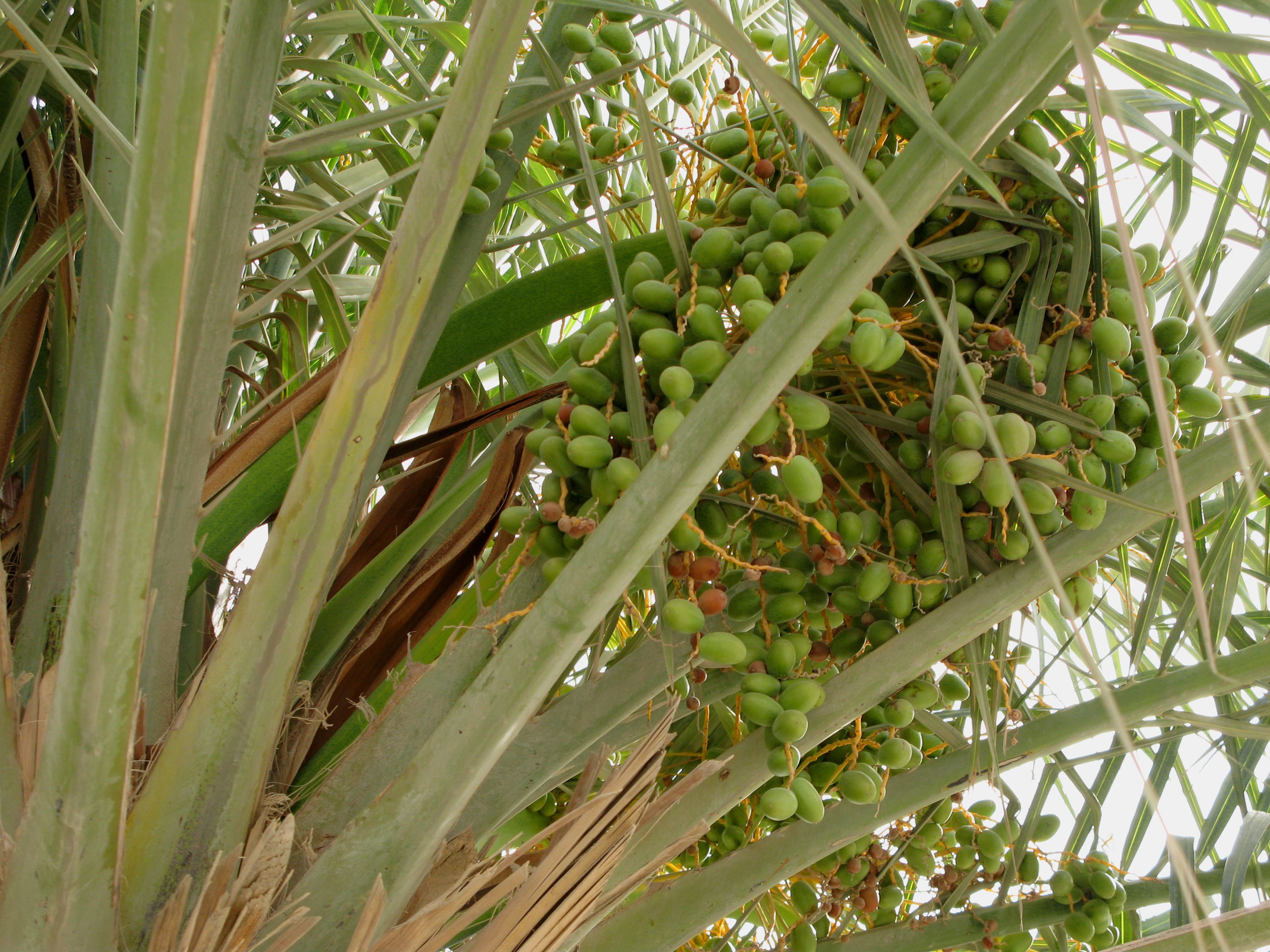|
Arboretum At Arizona State University
The Arboretum at Arizona State University is an arboretum located in small exhibit sites scattered across walkways and open areas throughout the campus of the Arizona State University in Tempe, Arizona. All of the sites are open to the public daily without charge, since the campus' public areas are not shut off from city streets. The arboretum was formally dedicated in 1990, and now includes over 300 species from the Sonoran Desert and other regions. It contains one of the best collections of date palms and conifers in the desert Southwest, as well as a growing collection of native southwestern plants. Major collections currently include: * Conifers * Deciduous trees * Evergreens * Fruit trees * Palms See also * List of botanical gardens and arboretums in Arizona * List of botanical gardens in the United States This list is intended to include all significant botanical gardens and arboretums in the United States. [...More Info...] [...Related Items...] OR: [Wikipedia] [Google] [Baidu] |
Arboretum
An arboretum (plural: arboreta) in a general sense is a botanical collection composed exclusively of trees of a variety of species. Originally mostly created as a section in a larger garden or park for specimens of mostly non-local species, many modern arboreta are in botanical gardens as living collections of woody plants and is intended at least in part for scientific study. In Latin, an ''arboretum'' is a place planted with trees, not necessarily in this specific sense, and "arboretum" as an English word is first recorded used by John Claudius Loudon in 1833 in '' The Gardener's Magazine'', but the concept was already long-established by then. An arboretum specializing in growing conifers is known as a pinetum. Other specialist arboreta include saliceta ( willows), populeta ( poplar), and querceta ( oaks). Related collections include a fruticetum, from the Latin ''frutex'', meaning ''shrub'', much more often a shrubbery, and a viticetum (from the Latin ''vitis,'' meani ... [...More Info...] [...Related Items...] OR: [Wikipedia] [Google] [Baidu] |
Arizona State University
Arizona State University (Arizona State or ASU) is a public research university in the Phoenix metropolitan area. Founded in 1885 by the 13th Arizona Territorial Legislature, ASU is one of the largest public universities by enrollment in the U.S. One of three universities governed by the Arizona Board of Regents, ASU is a member of the Universities Research Association and classified among "R1: Doctoral Universities – Very High Research Activity". ASU has nearly 150,000 students attending classes, with more than 38,000 students attending online, and 90,000 undergraduates and nearly 20,000 postgraduates across its five campuses and four regional learning centers throughout Arizona. ASU offers 350 degree options from its 17 colleges and more than 170 cross-discipline centers and institutes for undergraduates students, as well as more than 400 graduate degree and certificate programs. The Arizona State Sun Devils compete in 26 varsity-level sports in the NCAA Division ... [...More Info...] [...Related Items...] OR: [Wikipedia] [Google] [Baidu] |
Tempe, Arizona
, settlement_type = City , named_for = Vale of Tempe , image_skyline = Tempeskyline3.jpg , imagesize = 260px , image_caption = Tempe skyline as seen from Papago Park , image_flag = Tempe, Arizona official flag.png , seal_size = , image_map = File:Maricopa County Arizona Incorporated and Unincorporated areas Tempe Highlighted 0473000.svg , mapsize = 250px , map_caption = Location of Tempe in Maricopa County, Arizona , image_map1 = , mapsize1 = , map_caption1 = , pushpin_map = Arizona#USA , pushpin_map_caption = Location in Arizona##Location in the United States , pushpin_relief = 1 , coordinates = , subdivision_type = ... [...More Info...] [...Related Items...] OR: [Wikipedia] [Google] [Baidu] |
Sonoran Desert
The Sonoran Desert ( es, Desierto de Sonora) is a desert in North America and ecoregion that covers the northwestern Mexican states of Sonora, Baja California, and Baja California Sur, as well as part of the southwestern United States (in Arizona and California). It is the hottest desert in both Mexico and the United States. It has an area of . In phytogeography, the Sonoran Desert is within the Sonoran Floristic province of the Madrean Region of southwestern North America, part of the Holarctic realm of the northern Western Hemisphere. The desert contains a variety of unique endemic plants and animals, notably, the saguaro (''Carnegiea gigantea'') and organ pipe cactus (''Stenocereus thurberi''). The Sonoran Desert is clearly distinct from nearby deserts (e.g., the Great Basin, Mojave, and Chihuahuan deserts) because it provides subtropical warmth in winter and two seasons of rainfall (in contrast, for example, to the Mojave's dry summers and cold winters). This create ... [...More Info...] [...Related Items...] OR: [Wikipedia] [Google] [Baidu] |
Date Palm
''Phoenix dactylifera'', commonly known as date or date palm, is a flowering plant species in the palm family, Arecaceae, cultivated for its edible sweet fruit called dates. The species is widely cultivated across northern Africa, the Middle East, and South Asia, and is naturalized in many tropical and subtropical regions worldwide. ''P. dactylifera'' is the type species of genus '' Phoenix'', which contains 12–19 species of wild date palms. Date trees reach up to in height, growing singly or forming a clump with several stems from a single root system. Slow-growing, they can reach over 100 years of age when maintained properly. Date fruits (dates) are oval-cylindrical, long, and about in diameter, with colour ranging from dark brown to bright red or yellow, depending on variety. Containing 61–68 percent sugar by mass when dried, dates are very sweet and are enjoyed as desserts on their own or within confections. Dates have been cultivated in the Middle East and t ... [...More Info...] [...Related Items...] OR: [Wikipedia] [Google] [Baidu] |
Pinophyta
Conifers are a group of cone-bearing seed plants, a subset of gymnosperms. Scientifically, they make up the division Pinophyta (), also known as Coniferophyta () or Coniferae. The division contains a single extant class, Pinopsida. All extant conifers are perennial woody plants with secondary growth. The great majority are trees, though a few are shrubs. Examples include cedars, Douglas-firs, cypresses, firs, junipers, kauri, larches, pines, hemlocks, redwoods, spruces, and yews.Campbell, Reece, "Phylum Coniferophyta". Biology. 7th. 2005. Print. P. 595 As of 1998, the division Pinophyta was estimated to contain eight families, 68 genera, and 629 living species. Although the total number of species is relatively small, conifers are ecologically important. They are the dominant plants over large areas of land, most notably the taiga of the Northern Hemisphere, but also in similar cool climates in mountains further south. Boreal conifers have many wintertime adap ... [...More Info...] [...Related Items...] OR: [Wikipedia] [Google] [Baidu] |
Deciduous
In the fields of horticulture and Botany, the term ''deciduous'' () means "falling off at maturity" and "tending to fall off", in reference to trees and shrubs that seasonally shed leaves, usually in the autumn; to the shedding of petals, after flowering; and to the shedding of ripe fruit. The antonym of ''deciduous'' in the botanical sense is evergreen. Generally, the term "deciduous" means "the dropping of a part that is no longer needed or useful" and the "falling away after its purpose is finished". In plants, it is the result of natural processes. "Deciduous" has a similar meaning when referring to animal parts, such as deciduous antlers in deer, deciduous teeth (baby teeth) in some mammals (including humans); or decidua, the uterine lining that sheds off after birth. Botany In botany and horticulture, deciduous plants, including trees, shrubs and herbaceous perennials, are those that lose all of their leaves for part of the year. This process is called a ... [...More Info...] [...Related Items...] OR: [Wikipedia] [Google] [Baidu] |
Evergreen
In botany, an evergreen is a plant which has foliage that remains green and functional through more than one growing season. This also pertains to plants that retain their foliage only in warm climates, and contrasts with deciduous plants, which completely lose their foliage during the winter or dry season. Evergreen species There are many different kinds of evergreen plants, both trees and shrubs. Evergreens include: *Most species of conifers (e.g., pine, hemlock, blue spruce, and red cedar), but not all (e.g., larch) * Live oak, holly, and "ancient" gymnosperms such as cycads *Most angiosperms from frost-free climates, and rainforest trees *All Eucalypts * Clubmosses and relatives *Bamboos The Latin binomial term , meaning "always green", refers to the evergreen nature of the plant, for instance :'' Cupressus sempervirens'' (a cypress) :'' Lonicera sempervirens'' (a honeysuckle) :'' Sequoia sempervirens'' (a sequoia) Leaf longevity in evergreen plants varies from ... [...More Info...] [...Related Items...] OR: [Wikipedia] [Google] [Baidu] |
Fruit
In botany, a fruit is the seed-bearing structure in flowering plants that is formed from the ovary after flowering. Fruits are the means by which flowering plants (also known as angiosperms) disseminate their seeds. Edible fruits in particular have long propagated using the movements of humans and animals in a symbiotic relationship that is the means for seed dispersal for the one group and nutrition for the other; in fact, humans and many animals have become dependent on fruits as a source of food. Consequently, fruits account for a substantial fraction of the world's agricultural output, and some (such as the apple and the pomegranate) have acquired extensive cultural and symbolic meanings. In common language usage, "fruit" normally means the seed-associated fleshy structures (or produce) of plants that typically are sweet or sour and edible in the raw state, such as apples, bananas, grapes, lemons, oranges, and strawberries. In botanical usage, the term "fruit" als ... [...More Info...] [...Related Items...] OR: [Wikipedia] [Google] [Baidu] |
Arecaceae
The Arecaceae is a family of perennial flowering plants in the monocot order Arecales. Their growth form can be climbers, shrubs, tree-like and stemless plants, all commonly known as palms. Those having a tree-like form are called palm trees. Currently, 181 genera with around 2,600 species are known, most of which are restricted to tropical and subtropical climates. Most palms are distinguished by their large, compound, evergreen leaves, known as fronds, arranged at the top of an unbranched stem. However, palms exhibit an enormous diversity in physical characteristics and inhabit nearly every type of habitat within their range, from rainforests to deserts. Palms are among the best known and most extensively cultivated plant families. They have been important to humans throughout much of history. Many common products and foods are derived from palms. In contemporary times, palms are also widely used in landscaping. In many historical cultures, because of their imp ... [...More Info...] [...Related Items...] OR: [Wikipedia] [Google] [Baidu] |
List Of Botanical Gardens And Arboretums In Arizona
This list of botanical gardens and arboretums in Arizona is intended to include all significant botanical gardens and arboretums in the U.S. state of Arizona. See also *List of botanical gardens and arboretums in the Unit ...
[...More Info...] [...Related Items...] OR: [Wikipedia] [Google] [Baidu] |
List Of Botanical Gardens In The United States
This list is intended to include all significant botanical gardens and arboretums in the United States.BGCI Garden Search Botanic Gardens Conservation International American Public Gardens Association [...More Info...] [...Related Items...] OR: [Wikipedia] [Google] [Baidu] |






